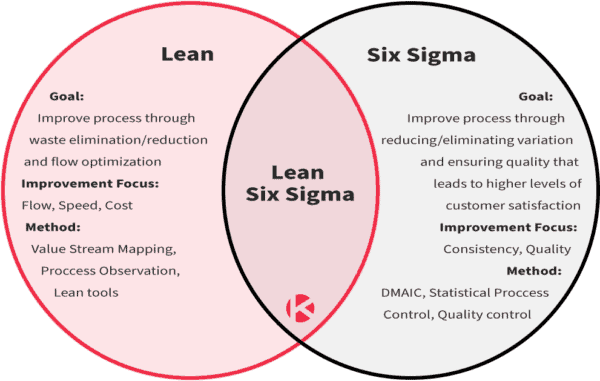In today’s highly competitive business landscape, organizations are constantly seeking ways to enhance their efficiency, reduce costs, and improve product and service quality. One methodology that has stood the test of time and continues to deliver remarkable results is six sigma. Originally developed by Motorola in the 1980s and popularized by General Electric, Six Sigma has become a beacon of excellence in process improvement. In this blog, we will explore the fundamentals of Six Sigma, its key principles, methodologies, and the significant impact it can have on your organization’s success.
Understanding Six Sigma
Six Sigma is both a philosophy and a set of tools and techniques designed to improve processes by reducing defects and variations. The term “Six Sigma” refers to the statistical concept that a process should operate with no more than 3.4 defects per million opportunities (DPMO). Achieving this level of performance requires a systematic and data-driven approach.
Key Principles of Six Sigma
- Customer Focus: Six Sigma begins with understanding and meeting customer requirements. It emphasizes delivering products and services that consistently meet or exceed customer expectations.
- Data-Driven Decision Making: Data is the foundation of Six Sigma. Organizations collect and analyze data to identify areas for improvement, measure process performance, and make informed decisions.
- Process Improvement: Six Sigma focuses on improving processes rather than assigning blame. It encourages a culture of continuous improvement.
- Teamwork: Cross-functional teams play a crucial role in Six Sigma projects. Collaboration ensures a broader perspective and a more comprehensive solution.
- DMAIC: The DMAIC (Define, Measure, Analyze, Improve, Control) methodology is a structured approach used in Six Sigma projects to drive improvements systematically.
Phases of DMAIC
- Define: Clearly define the problem, the project scope, and the customer requirements.
- Measure: Collect data to measure the current process performance and identify potential areas of improvement.
- Analyze: Analyze the data to understand the root causes of defects or variations in the process.
- Improve: Develop and implement solutions to address the identified issues and optimize the process.
- Control: Establish controls to sustain the improved process performance over time.
Benefits of Six Sigma
- Improved Quality: Six Sigma helps reduce defects, leading to higher product and service quality.
- Cost Reduction: By optimizing processes, organizations can reduce costs related to rework, defects, and inefficiencies.
- Increased Customer Satisfaction: Meeting or exceeding customer expectations leads to greater customer satisfaction and loyalty.
- Enhanced Efficiency: Streamlining processes results in increased efficiency and productivity.
- Competitive Advantage: Organizations that embrace Six Sigma often gain a significant competitive edge in their industries.
Challenges in Implementing Six Sigma
Implementing Six Sigma successfully can be challenging, and organizations may encounter hurdles such as resistance to change, lack of data, and inadequate training. However, with proper leadership commitment and dedication, these challenges can be overcome.
Conclusion
Six Sigma is a proven methodology for achieving operational excellence and delivering high-quality products and services. By embracing its principles and methodologies, organizations can streamline processes, reduce defects, and enhance customer satisfaction. Whether you are a manufacturing company, a healthcare provider, or a service-oriented business, Six Sigma can be tailored to suit your needs and drive lasting improvements. In today’s competitive business environment, Six Sigma is not just a methodology; it’s a strategic imperative for success.
